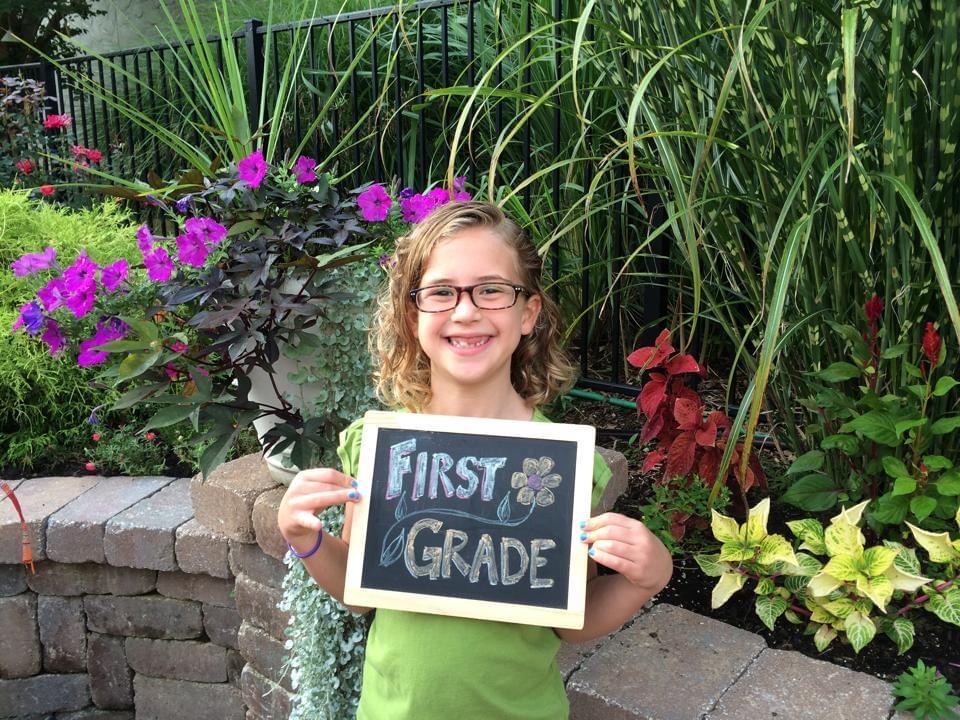It’s that time of year when social media fills up with pictures of kids in their summer skin looking cleaner than usual. There are fewer of these snaps this August, with just 1 in 7 kids in the U.S. returning to brick-and-mortar school full time this fall (so says a New York Times survey). The bulk of us are doing some version of school at home – or at least I predict we will be soon, anyway, and maybe for the duration of the school year. Honestly, who knows at this point?
As I scroll, I can’t help but tune in to what my friend Laura McKowen calls “pictured/not pictured.” We see in these pics eager smiles and the hope of new adventures, but what’s not seen? How about several months’ worth of angst and suspense; the sense of caged boredom; the exhaustion and concern of nervous parents on the other side of the camera; the notion that there are simply no good choices for school reopening in the middle of a global pandemic. Each one has tradeoffs and consequences.

And, for every “normal” looking photo, there could be countless more of bedraggled kiddos (and their parents) wading into the uncertain territory of virtual school. But most of us won’t take those because, even though a picture is worth a thousand words, no image could possibly capture the current national level of “WTF:” commerce and the economy imploded; education and support systems upended; the distinction between home and, well, everything else evaporated; our sense of community undone; and the burden on parents unmatched in recent history. We know it takes a village to raise a child, but this forced retreat into isolation means the village is now virtual. And Zoom, as wonderful and necessary a lifeline it is, can’t make a meal or wash the laundry or respond to the 839thquestion of the day.
Parents have been asked to pivot, adapt and assume extra responsibility during this crisis with nothing taken off the proverbial plate and, still, just a finite 24 hours. We’re facing pressure from all sides, with stressors compounded by one another, and no break. COVID-19 has exposed the holes in our American system of modern work and parenting; as one social media commenter put it: ‘The myth of having it all has been busted.”
Make no mistake: YOU are the village now.
Something’s got to give. But what?
A friend remarked the other day that she’s viewing current circumstances as “a gap year for the world.” I’m on board with that way of thinking – something of a pause of “real life,” a time for learning and doing in nontraditional ways.
But if we’re learning in a nontraditional manner, we’ve got to measure success nontraditionally, too. Point is, we can’t use the “normal” metrics because “normal” just doesn’t exist anymore. This year, for my family, the yardstick will be framed less in the hard assessments of grading and meeting achievement goals and more in the reflection of what’s happening in our hearts and souls:
Are we laughing?
Sleeping okay at night?
Getting a decent amount of natural light and fresh air?
Eating for nourishment and not boredom?
In what ways might we explore new things while sticking close to home, lest we become routine zombies?
Can we find the peace that exists in non-electronic down-time?
Can we identify the spectrum of emotions that bubble up – e.g., frustration, sadness, ennui – and work through them in (relatively) healthy ways?
Are we having meaningful connections with the people we love, even if only virtually?
Are we making good memories?
Your family may have a different set of metrics based on your own values, priorities and answers to the question: “What’s important to us in this time?”
I used to consider myself a Class A overachiever; these days I’m good with about 80 percent. So I vote we take this gap year for what it is and measure accordingly – and not just for the kids, either. Parents, if there’s ever been a time when we needed to prioritize our mental health and well-being, it’s now. We ignore ourselves too much and the whole damn thing will crumble.
My wishes for you and all in your care during this upside-down time: Patience. The listening ear of someone who gets it. Feeling okay with lowering the standards a bit. Trust in impermanence. Trust in yourself. As much grace as you can reasonably muster. A sense of humor. Breath. Quiet moments. Joyful moments. Rest. Laughter. Balance. And, most of all, an unwavering faith that you can do what’s being asked of you in this moment, and the knowledge that while “normal” as we knew it may never return, this particular insanity will not last forever.
I love you. We can do this.
P.S. To every teacher, teacher’s aide, school administrator, staff member, bus driver, nurse, librarian, custodian and counselor: THANK YOU. We appreciate you and your work more than you can imagine.





